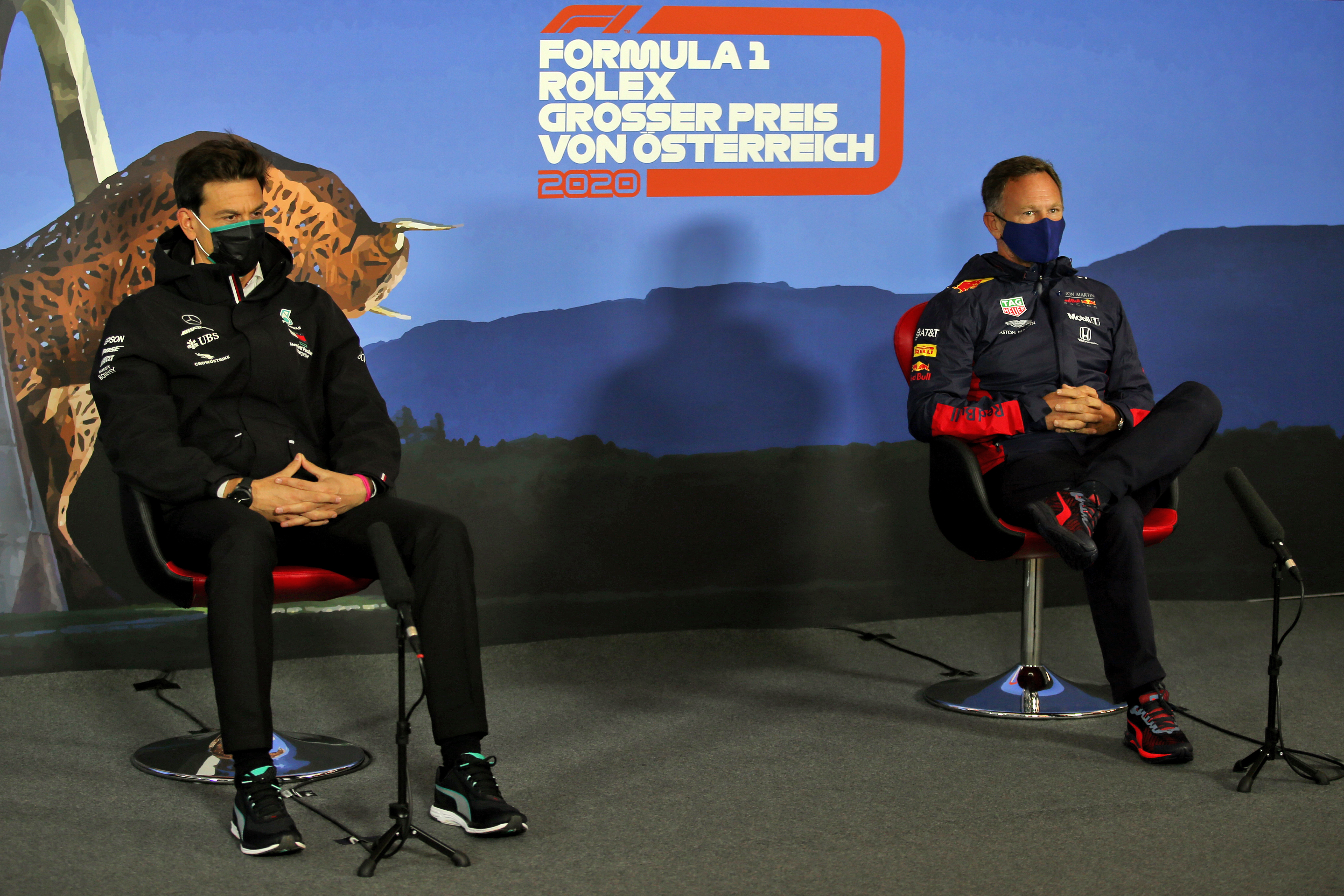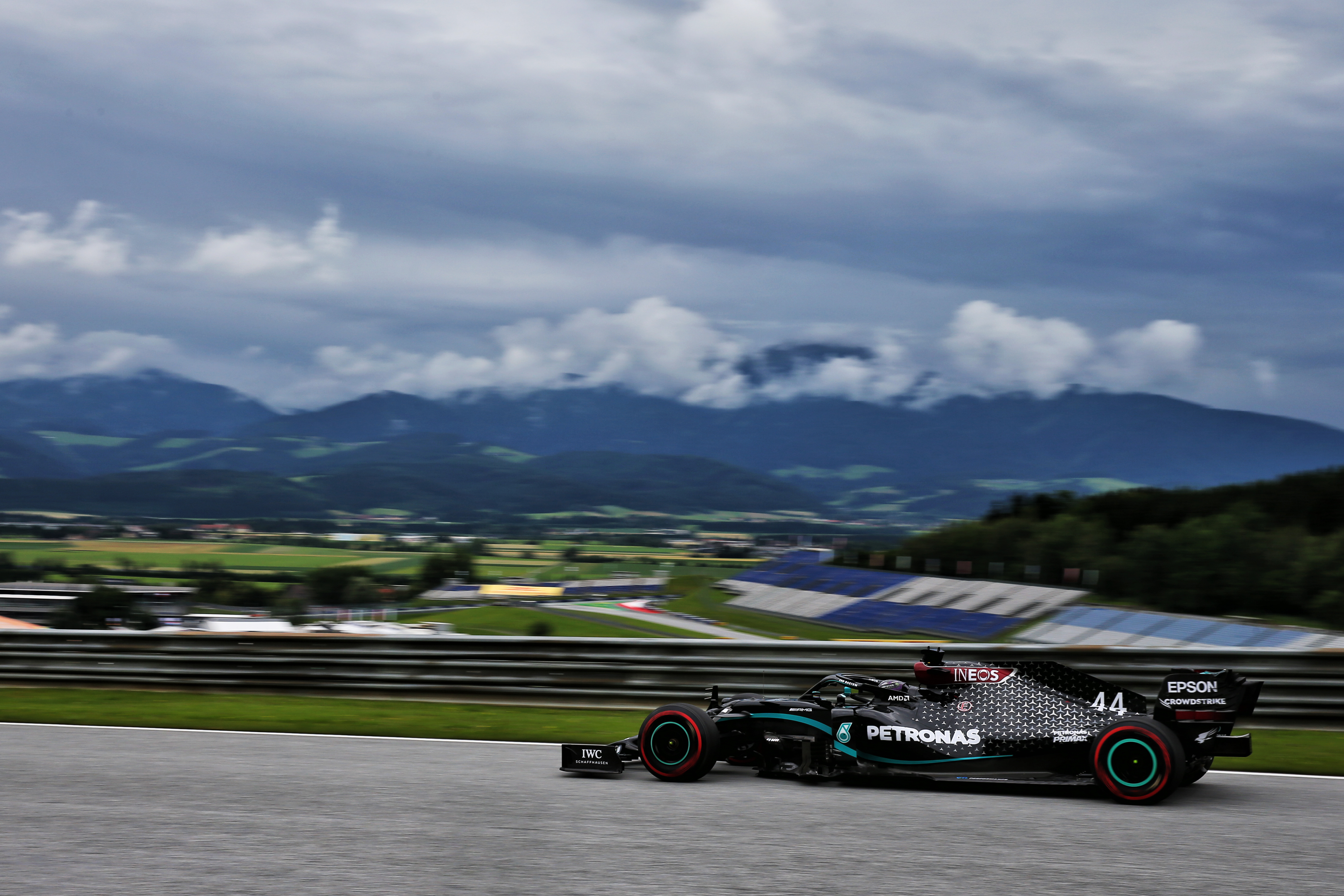In the very early hours of Saturday morning, the Austrian Grand Prix stewards rejected Red Bull’s protest and declared Mercedes’ DAS system fully legal.
Here’s what our Formula 1 writers made of the decision.
GARY ANDERSON
An exceptionally detailed and correct verdict
Looking through the FIA stewards’ decision to accept the Mercedes DAS system. I fully agree with the ruling.
Actually, it is one of the most comprehensive findings I have seen and it explains the reasoning in exceptional detail.
The main analysis is based on what is the function of the system. Once it was accepted as primarily steering, the discussion was over.
I didn’t think that protesting the system because it generated an aerodynamic change on the car would have any merit. Conventional steering does this and is a tool for changing the balance of the car with increased steering angles.
It is also completely contained within the steering rack, as our ‘stick’ model showed way back in February (see video below), and does not change the length of any suspension links as some suggested at the time.
Well done to Mercedes for coming up with something new and well done to Red Bull for putting to bed any controversy about the system.
Now, let’s get on with the first grand prix weekend of the season and see if DAS is of any benefit for either qualifying, or indeed, the race.
MARK HUGHES
No coincidence Red Bull was the protestor
The plain reality of the matter is that under the letter of the regulations there was nothing about the ingenious DAS system that was illegal.
It did something the writers of the regulation had never envisaged – as all the best F1 innovations do – but given there are no safety implications it hardly seemed a fair thing to ban such ingenuity without it at least giving its inventors the opportunity of some benefit for a season.
It was unfortunate for Red Bull in that it had just configured, at great expense and with a similar degree of ingenuity, a totally reconfigured front end that, by sod’s law, would make it unfeasible to quickly replicate the DAS system – as we explained in the video above back in March.
It was almost certainly not a coincidence that the team that would be least able to physically incorporate a DAS system into its car should be the one that felt strongest about it.
EDD STRAW
Everyone emerges with credit here

On the face of it, it might seem absurd that a system that first appeared four months ago was not ruled on by the FIA until late on Friday night of the first race weekend.
But this was simply due process and, in taking their time about it, the FIA stewards have ensured that they set a precedent with an in-depth verdict to leave no doubt as to the legality of the DAS.
All those involved did things the right way. Over a lengthy period, Mercedes consulted with the FIA technical department on its idea. In its original, lever-actuated form, DAS was illegal in the FIA’s opinion. But Mercedes went back to the drawing board and came up with a revised version that the technical department did consider acceptable.
As in the law, you can only really test if something is legal through a proper case and Red Bull deserves credit for protesting at the first opportunity rather than ‘grandstanding’ and waiting until after the race, which would have cast a shadow over the first GP of the season had the debate stretched on to a similar time on Sunday night.
The stewards’ verdict shows the FIA’s original opinion was correct, that Mercedes played an honest game in its dealings with the technical department and by ruling emphatically that DAS is part of the steering, the stewards closed off possible future protests.
The system doesn’t always work, but this time it did and all of those involved – including Red Bull – behaved correctly.
SCOTT MITCHELL
Mercedes deserves its year of DAS

Reading the verdict in full, it’s easy to see why Red Bull would think the DAS was at least worth protesting.
But the decision that the DAS is a creative system within a system, rather than a separate steering system entirely, means the ruling went in Mercedes’ favour: and rightly so.
It’s too easy to criticise the modern era of grand prix racing for lacking innovation. That is a lazy accusation because it puts the spotlight on surface-area components or creations. There are many brilliant things going on underneath.
The beauty of the DAS is partly in the visual manifestation of its purpose, in that we can see it working in an unconventional manner, but also its creativity.
Its ability to leave a paddock of smart cookies open-mouthed is a testament to innovation that helps makes F1 what it is.
Given DAS has been banned for 2021, it’s heartening we will at least be able to enjoy the novelty of such visible ingenuity this season.




